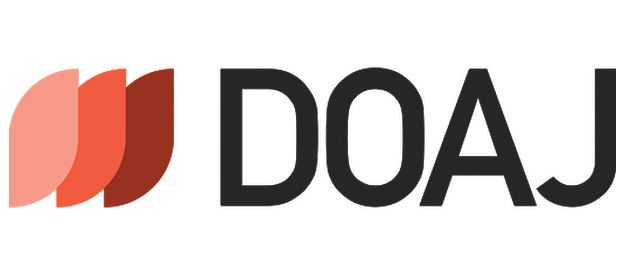التسويق الفيروسي عـبر مواقع التواصل الاجتماعي وانعكاسه على السلوك الشرائي
DOI:
https://doi.org/10.33282/abaa.v16i65.1037الكلمات المفتاحية:
التسويق الفيروسي، العلامات التجارية، السلوك الشرائيالملخص
يستند التسويق الفيروسي إلى العلاقات الاجتماعية والرسائل الإبداعية لخلق عَلاقة تبادلية مفيدة للمنظمة وجمهورها، لزيادة انتشار علامتها التجارية بتكاليف منخفضة والوصول إلى أكبر عدد من العملاء. لذا تَتحدد البحث بالكشف عن علاقة التسويق الفيروسي للعلامات التجارية "أبل وسامسونك" عبر مواقع التواصل الاجتماعي بالسلوك الشرائي للمستهلكين، ومصادر المعلومات التي يعتمدها الجمهور للبحث عن تفاصيل المنتجات والخدمات قبل الشراء، ودوافع المستخدمين لمتابعة المنشورات التسويقية على مواقع التواصل الاجتماعي، وأساليب التسويق الفيروسي وتكتيكاته التي تزيد من ولاء المستهلك للعلامات التجارية. واعتمد البَاحِث المنهج المسحي، باستخدام الاستبانة، واختار "العينة العشوائية المتعددة المراحل"، وبلغ حجم عينة البحث (500) مبحوثٍ/ةٍ مِن مدينةِ بغداد المركز بجانبيها "الكرخ، والرصافة"، وممّن بلغت أعمارهم (18 عاماً فأكثر) مِن النساءِ والرجال، ومِن مستخدميّ/ ات مواقع التواصل الاجتماعي. وتوصل البَاحِث إلى أن نسبة كبيرة من عينة البحث تشارك منشوراتهم، وتُعدّ "مشاركات الأصدقاء عبر صفحاتهم" من اكثر المنشورات جذبا، وهذا يزيد من معرفة عينة البحث بالعلامة التجارية، إذ يشارك المبحوثون عندما يشعرون بأنها تفيد الأصدقاء. وتزداد ثقة غالبية المبحوثين عندما يتعرضون إلى رسائل تسويقية من الصفحات الموثقة بالعلامة الزرقاء، واتفق غالبية المبحوثين على أن المعلومات التي تقدمها الشركات عبر منصاتهم "كافية بشكل مناسب"، وأن دوافع المبحوثين لمتابعة هذه المعلومات هي "احتواء المنشور على عروض وتخفيضات". وتُعدّ من أهم الأسباب التي تدفع المبحوثين للشراء الكترونياً.
التنزيلات
المراجع
Al-Eid, F., prestige, Z. a., & Fadila, B. (2021). The impact of viral marketing on developing customer loyalty to the brand. Study of a sample of customers of the Mobilis brand. North African Economics Journal, 17(1), 551-570. https://www.asjp.cerist.dz/en/article/146369
Anaba, H. M. L. (2017). Small projects for young people after the era of entrepreneurship.
As' ad, H. A.-R., & Alhadid, A. Y. (2014). The impact of social media marketing on brand equity: An empirical study on mobile service providers in Jordan. Review of Integrative Business and Economics Research, 3(1), 315.
Canell, B., & Peres, A. (2019). Digital Consumption. UK: Routledge.
Gatea, K. J., & al-rawi, B. J. (2020). Motives for public exposure to advertisement through smart phone applications and its purchasing decisions relationship (A research drawn from a Master Degree thesis). ALBAHITH ALALAMI, 12(49), 150-174. https://doi.org/10.33282/abaa.v12i49.671
Helm, S. (2000). Viral Marketing - Establishing Customer Relationships by 'Word-of-mouse'. Electronic Markets, 10(3), 158-161. https://doi.org/10.1080/10196780050177053
Hines, T., & Bruce, M. (2007). Fashion marketing: contemporary issues. Routledge.
Irwansyah, M. R., Sunitha, D., & Luh Gede Kusuma, D. (2019, 2019/11). The Influence Of Viral Marketing On Online Purchasing Decisions Of Students Proceedings of the International Conference on Tourism, Economics, Accounting, Management, and Social Science (TEAMS 19), https://doi.org/10.2991/teams-19.2019.21
Kotler, P., & Armstrong, G. (2017). Consumer Behavior. USA: Pearson.
Kotler, P., Saunders, J., Armstrong, G., & Bong, V. (2017). Marketing: Behavior - Markets - Environment - Information (Part Two) (M. Naffa, Trans.). Syria: Dar Aladdin for publishing, printing and distribution.
KUMAR, A., & SHARMA, R. (1998). Marketing Management. New Delhi: Atlantic Publishers & Distri.
Ler, S. W. (2014). The attitudes of consumers towards viral marketing in Malaysia (Doctoral dissertation, UTAR).
Levinson, P. (2015). Latest new media (H. Rabie, Trans.). Cairo: Dar Al-Fajr for Publishing and Distribution.
Litvin, S. W., Goldsmith, R. E., & Pan, B. (2008). Electronic word-of-mouth in hospitality and tourism management. Tourism Management, 29(3), 458-468. https://doi.org/https://doi.org/10.1016/j.tourman.2007.05.011
Mounir, H. (2021). The impact of viral marketing trends on consumer purchasing trends - a field study -. Creativity Magazine, 11(1), 59-74. https://www.asjp.cerist.dz/en/article/156985
Mounir, N. (2014). E-commerce and e-marketing. Algeria: Office of University Publications.
Nigam, A. (2012). Influence of Viral Marketing on Brand Equity Building With Reference To Online Social Networking Sites https://www.semanticscholar.org/paper/Influence-of-Viral-Marketing-on-Brand-Equity-With-Nigam/807d4a7fddd50e6af4751a6b3632b990e0c9ace7
Qara, A. (2018). Viral marketing and its role in establishing the brand of cosmetics products - a field study of a sample of female social media users -. Journal of Marketing Studies and Business Administration, 2(2), 164-176. https://www.asjp.cerist.dz/en/article/90338
Quiroz, J., & Ross, K. (2011). Computer Networks and the Internet Foundations and principles of networks and the Internet (A. M. Al-Alfi & R. A.-S. Abdel-Al, Trans.). Saudi Arabia: Obeikan Publishing.
Sahni, K., & Appiah, K. (2019). The dynamics of social media and value co-creation. In Leveraging Computer-Mediated Marketing Environments (pp. 22-42). IGI Global.
Salima, M. (2020). Studying the impact of the use of hype marketing on the brand awareness of the Algerian consumer by applying it to Huawei smartphone products. Namaa Journal of Economics and Trade, 4(2), 79-121. https://www.asjp.cerist.dz/en/article/139495
Schivinski, B., & Dabrowski, D. (2016). The effect of social media communication on consumer perceptions of brands. Journal of Marketing Communications, 22(2), 189-214.
Shartih, R. O. (2017). Electronic advertising: contemporary concepts and strategies. Dubai: Dar Al Manhal Publishing
Toters. (2019, September 3). Toters IQ. https://bit.ly/3IBPPM2
التنزيلات
Key Dates
الإستلام
النسخة النهائية
الموافقة
منشور
إصدار
القسم
الرخصة
الحقوق الفكرية (c) 2024 الباحث

هذا العمل مرخص بموجب Creative Commons Attribution 4.0 International License.


















